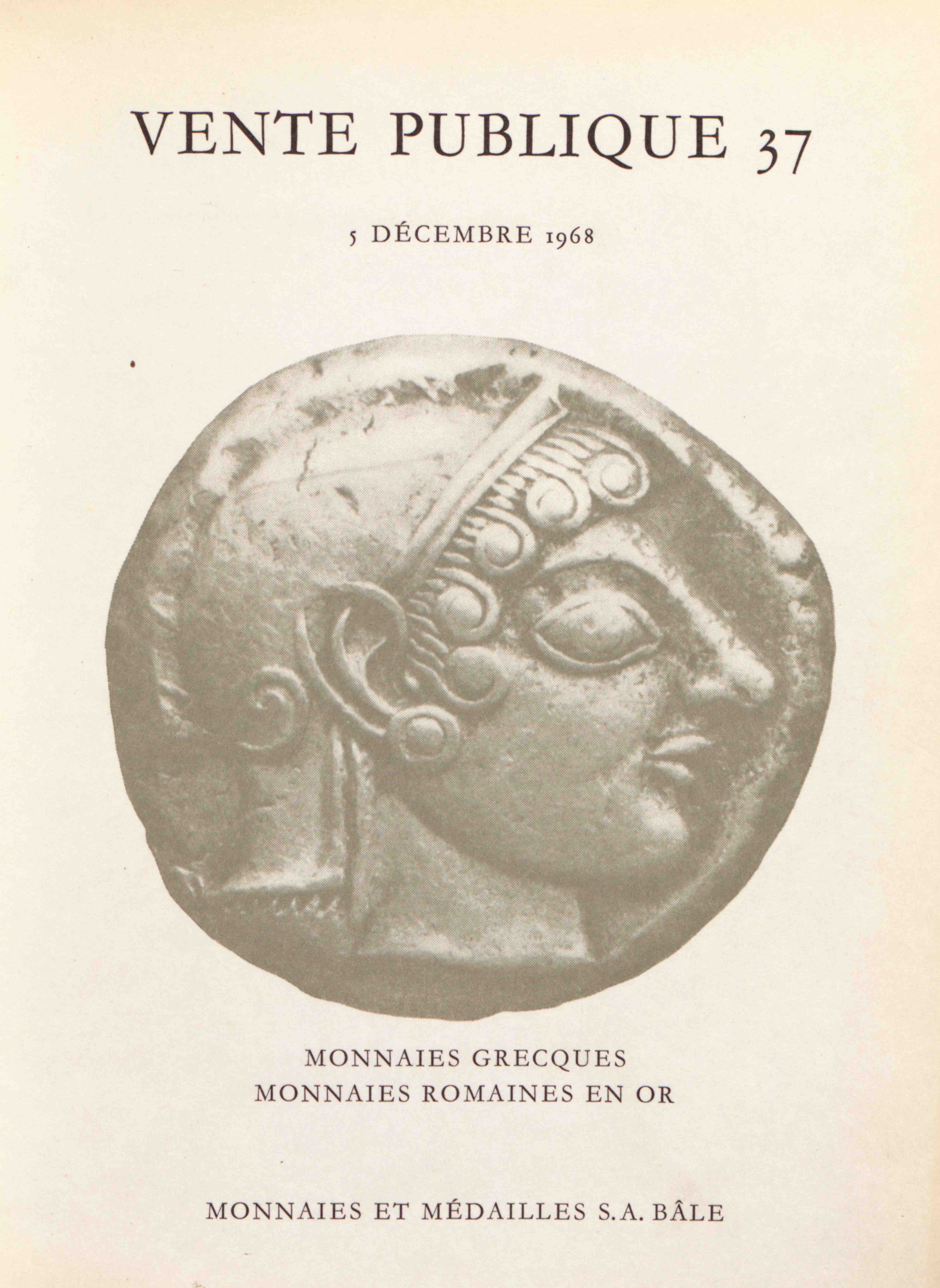Sicily, Syracuse. c. 450-440 BC
Sicily, Syracuse. c. 450-440 BC
AR Tetradrachm, 17.19g (26mm, 3h).
Quadriga r. Nike crowning horses, Ketos in exergue / Head of Arethusa r. wearing pearl diadem, ΣΥΡΑΚΟΣΙO to r., surrounded by four dolphins.
Pedigree: Ex Münzen und Medaillen AG 37, Basel 1968, Lot 106. Bank Leu 25, Zürich 1980, Lot 69.
References: Boehringer 483. Hoover 1311. Lathe Biosas S. 208 (this coin)
Grade: Nicely centered with good strike and toned surfaces. One edge crack. Small indentation on chin of Arethusa. Mint State
gk2001c
Scroll down for more information about this coin.
The coinage of Syracuse with the various renditions of Arethusa is broad. The reverse die varieties of Syracuse showcase several different Arethusa types. In this case, the nymph is shown with her hair pulled back and decorated with a pearl diadem. She wears a rather stern expression. In others, her hair flows above her head as if she is immersed in water. This particular type was struck sometime around 450 BC about 15 years after the start of the Second Democracy (c. 466-305 BC). It started with the death of the tyrant Hiero and lasted until the fall of Thrasybulus. Aristotle described the period as a democracy but it was probably more of an oligarchy with a few powerful men ruling versus a democracy as we know it. The artistry of the time reflects a more classical style as compared with earlier archaic motifs. Arethusa has fuller cheeks and her eyes show lashes and other finer details. The obverse has a ketos in the exergue while earlier types do not have this.




